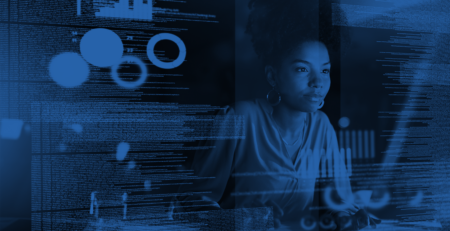Zooming into Uncertainty While Teleworking
MA at a Distance: Managing your Online Attribution Teleworking
An Ntrepid Academy Blog Series
By now, many of us are in the midst of a prolonged period of telework brought on by the COVID-19 pandemic. Indeed, entire sectors of government, including civilian agencies and the defense and national security workforces, have shifted to remote operations. This has created a large group of analysts, operators, investigators, and researchers who are conducting critical—and potentially sensitive—work from their homes.
The shift to large-scale telework has introduced uncertainty to these agencies’ continued operations. A newfound reliance on commercial VPNs, video teleconference services, home Wi-Fi networks, and other technical infrastructure that weren’t designed for a national security use case can introduce a series of risks to online operations.
Our challenge, then, is how to employ managed attribution (MA) best practices while teleworking. Just as “social distancing” has become a best practice to safeguard our health and communities, it’s imperative that we employ MA best practices while we’re away from our offices and secure infrastructure; “MA at a distance” is crucial to securing our online operations.
Ntrepid is committed to supporting the national security establishment during these uncertain times. Our Ntrepid Academy is offering free, open-enrollment sessions to equip users with the skills and knowledge to operate online effectively. Similarly, this blog is the first entry in a new series that will highlight and examine the challenges we all face when conducting MA at a distance.
“Zoombombing:” A lesson on remote operational risks
The security vulnerabilities of various commercial video teleconferencing platforms—particularly Zoom—have received a lot of attention recently. As a relatively small videoconferencing application, it quickly became clear that Zoom was unprepared for the mass migration of users to the platform following the shelter-in-place mandates and lockdowns brought on by the coronavirus.
Zoom experienced a 126% increase in users from February to March as more than 70 million new users began to leverage Zoom for conferencing – and the world noticed. A new term, “Zoombombing,” was coined to characterize the raiding of Zoom meetings: joining someone else’s unsecured meeting and trolling, spamming, and displaying inappropriate or inflammatory content.
Some groups have discussed using Zoombombing and other meeting hijackings as a tactic to collect intelligence or disrupt operations. Organized meeting raids have been cited by the FBI as having origins on several different social media platforms, including 4chan, Reddit, Twitter, Instagram, and Telegram. In response to these high-profile security issues, Zoom has worked to improve its security options and encryption protocols.
There’s a lesson to be learned from our reliance on an unsecure video teleconferencing platform while teleworking: Zoom is quick and easy to use; there’s a very small learning curve and it allows the most mission-focused organizations to stay connected with their teams while carrying out their operations. This convenience, however, comes at the price of security.
As we think about how to practice MA at a distance, it’s important to remember that online operations present both risks and opportunities. Over the course of this blog series, we’ll highlight those trade-offs to help you make more informed decisions about how to effectively manage your online attribution at a distance.









